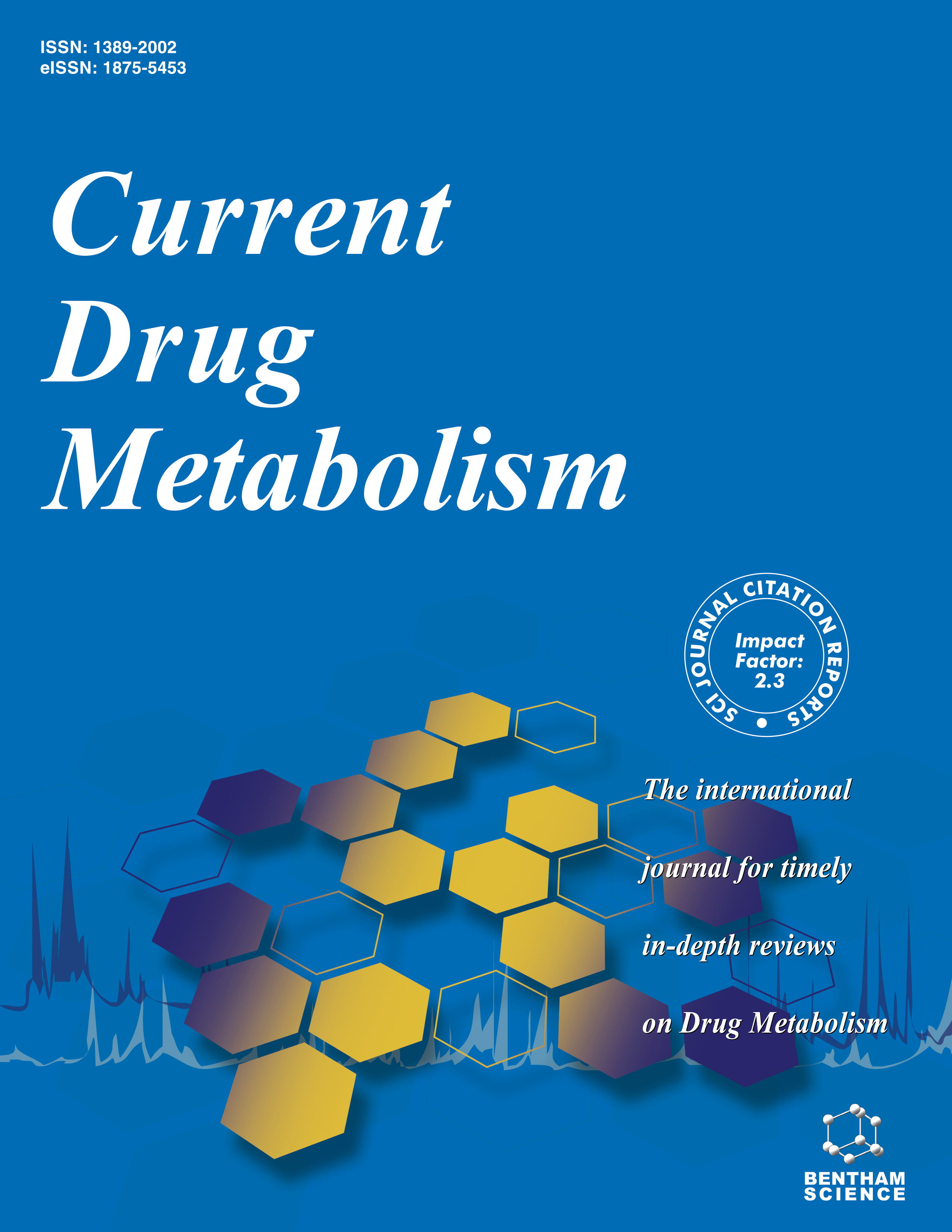- Home
- A-Z Publications
- Current Drug Metabolism
- Issue Home
Current Drug Metabolism - Current Issue
Volume 25, Issue 9, 2024
-
-
Pharmacokinetic Interactions of Paxlovid Involving CYP3A Enzymes and P-gp Transporter: An Overview of Clinical Data
More LessBackgroundThe US FDA has approved paxlovid, a combination of nirmatrelvir and ritonavir, as the first oral treatment for the management of mild-to-moderate COVID-19 patients.ObjectiveThe purpose of this review article is to explore the clinical data that is currently available regarding the drug-drug interactions (DDIs) of paxlovid with various medications.MethodsKeywords, such as drug interactions, paxlovid, ritonavir, nirm Read More
-
-
-
Hallmarks of Quercetin Benefits as a Functional Supplementary in the Management of Diabetes Mellitus-Related Maladies: From Basic to Clinical Applications
More LessQuercetin (QE), a particular flavonoid, is well known for its medicinal effects, including anti-oxidant, hypoglycemic, and anti-inflammatory effects. In this review, the findings of QE effects on diabetes STZ-induced, alloxan-induced, and its complications have been summarized with a particular focus on in vitro, in vivo, and clinical trials. Consequently, QE mediates several mechanisms, including ameliorating tumor necrosis facto Read More
-
-
-
Effects of Shenmai Injection on the Pharmacokinetics of Dasatinib: An In-Depth In vivo Analysis Utilizing UPLC-MS/MS Technique
More LessBackgroundDasatinib has been widely used in the treatment of a variety of cancers, such as lung cancer and acute myeloid leukemia. Shenmai injection is a traditional Chinese medicine injection that is often used in antitumor adjuvant therapy. In recent years, dasatinib combined with Shenmai injection has been increasingly used to treat tumors clinically. However, the potential risks and benefits of co-administering She Read More
-
-
-
Characterization of Five Natural Anthraquinone Compounds as Potent Inhibitors against CYP1B1: Implications for Cancer Treatment
More LessAuthors: Zujia Chen, Zhixiang Xu, Xiaodong Chen, Xintong Guan, Jie Du, Jiahui Zhang, Changyuan Wang and Jingjing WuBackgroundHuman cytochrome P450 1B1 (CYP1B1) is an extrahepatic enzyme that is overexpressed in many tumors and is associated with tumor development and acquired resistance. Few studies have reported that anthraquinone compounds have inhibitory activity against the CYP1B1 enzyme. Cassiae semen (Leguminosae) is a well-known traditional Chinese medicine containing more than 70 compounds. The crude ex Read More
-
-
-
Exploring Drug-Drug Interactions between Losartan and Carbamazepine: A Pharmacokinetic and Pharmacodynamic Study
More LessAuthors: Shruthi A Sundargowda and Sunil Kumar KadiriBackgroundHypertension, which affects 1.28 billion people globally aged 30 to 79, is characterized by continuously high blood pressure (140/90 or more) and raises the risk of premature death. Losartan, an angiotensin receptor blocker (ARB), is suggested for patients under the age of 55 who cannot take ACE inhibitors as a first treatment option. Epilepsy, a chronic neurological illness marked by repeated seizures, affects more Read More
-
-
-
Umbelliferone Enhances Immune Function in Cyclophosphamide-Induced Immunosuppressed Mice via Histidine and Purine Metabolism Regulation
More LessAuthors: Mei Li, Jing Wang, Bingjie Huo, Qianqian Wan, Liwei Xing, Yuming Wang, Huan Pei, Li Wang, Yafei Xia and Huantian CuiBackgroundChemotherapy-induced immunosuppression significantly impacts patient’s quality of life. Umbelliferone (UMB) is known for its anti-inflammatory, antioxidant, and anti-apoptotic properties, but its effects on cyclophosphamide (CTX)-induced immunosuppression need further study.MethodsWe established a CTX-induced immunosuppressed mouse model and administered varying doses of UMB. Immune functio Read More
-
Volumes & issues
-
Volume 25 (2024)
-
Volume 24 (2023)
-
Volume 23 (2022)
-
Volume 22 (2021)
-
Volume 21 (2020)
-
Volume 20 (2019)
-
Volume 19 (2018)
-
Volume 18 (2017)
-
Volume 17 (2016)
-
Volume 16 (2015)
-
Volume 15 (2014)
-
Volume 14 (2013)
-
Volume 13 (2012)
-
Volume 12 (2011)
-
Volume 11 (2010)
-
Volume 10 (2009)
-
Volume 9 (2008)
-
Volume 8 (2007)
-
Volume 7 (2006)
-
Volume 6 (2005)
-
Volume 5 (2004)
-
Volume 4 (2003)
-
Volume 3 (2002)
-
Volume 2 (2001)
-
Volume 1 (2000)
Most Read This Month Most Read RSS feed
Article
content/journals/cdm
Journal
10
5
false
en


